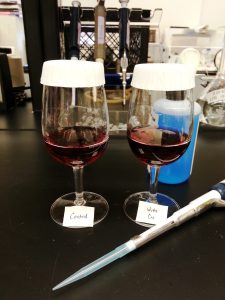New on the DGW Learning Center is a winemaking Production Guide on effectively removing copper from wines.
Production Guides are intended for real-time use, can be easily printed from the website (or in pdf format) to act as a tool for cellar employees. Over the years, I have found that these easy-to-print and easy-to-laminate tools are an effective, quick way at improving employee performance for vital cellar processing operations.
Therefore, the DGW Learning Center will continue to host new Production Guides and Fact Sheets over time and based on needs I see in the cellar.v
New on the DGW Learning Center is a winemaking Production Guide on effectively removing copper from wines.
Production Guides are intended for real-time use, can be easily printed from the website (or in pdf format) to act as a tool for cellar employees. Over the years, I have found that these easy-to-print and easy-to-laminate tools are an effective, quick way at improving employee performance for vital cellar processing operations.
Therefore, the DGW Learning Center will continue to host new Production Guides and Fact Sheets over time and based on needs I see in the cellar.

Why is Copper in the Wine?
Copper, like many metals in wine, can occur naturally from the soils in which grapes are grown (Waterhouse et al., 2016). The use of copper in grape pesticides may also contribute to copper concentration in juice and wine. However, copper may also be added to the wine through normal wine processing: picked up on equipment or added as a fining agent. Copper sulfate is a fining agent routinely used to fix hydrogen sulfide and some reduction problems. The addition of low concentration copper sulfate can quickly clear up a stinky wine and refresh the aromatics.
However, a word of caution. If copper sulfate is added to a thiol-based (mercaptan-based) variety (e.g., Sauvignon Blanc, Syrah, Semillion, Viognier, potentially Vidal Blanc, etc.), the copper can also bind to their varietal thiols and inactivate their associated aroma (AWRI). For these varieties, it is best to minimize copper sulfate addition to ensure their best aromatic expression. Read below on best practices to reduce the incidence of hydrogen sulfide formation.
One issue associated with copper sulfate addition is the presence of residual copper in the wine. While this is not always a problem when adding copper sulfate, it can occasionally be an issue.
Furthermore, extra copper sulfate may be required to minimize reduction issues in some wines. However, copper concentration in wine is regulated in the U.S. based on its potential toxicity at extremely high concentrations (Godshaw, 2016).
Based on the CFR, copper sulfate addition (calculated as copper) may not exceed 6.0 ppm (or 6.0 mg/L). If copper is added up to this concentration, the wine should be analyzed for residual copper concentration. For those clients with this situation, I’m happy to recommend a few laboratories, locally and otherwise, that can provide you with adequate results for this analysis.
Following treatment to remove the copper, the wine should be analyzed a second time to ensure the copper concentration is below the legal limit. The limit, defined in the CFR, for a finished wine cannot exceed 0.5 ppm (0.5 mg/L) of copper.
Are Copper Removal Strategies Effective?
Removal of copper is important, as research has demonstrated wine stability challenges associated with residual copper in wine. Copper, as a heavy metal, can contribute to wine oxidation reactions (Godshall 2016). Additionally, high copper concentrations may also lead to the formation of a copper-haze or casse.
In 2015, Kreitman et al. published a paper showing that copper forms a soluble complex with thiols in wine. This is opposed to the insoluble complex that was previously thought to precipitate out of wine upon its addition. While this study demonstrated the insoluble complex in a model wine solution and under reductive conditions, it created an argument for how copper may remain in wine through production and post-bottling. This is a potential issue as residual copper tends to increase the risk of post-bottling reduction (hydrogen sulfide, thiols/mercaptans) aromas for wines bottled under reductive conditions (Waterhouse et al., 2016).
With this in mind, and when making larger copper sulfate additions, knowing how to reduce residual copper levels in wine is valuable.
There are several fining options that winemakers can explore to effectively remove copper from wine. The current Production Guide lists the three easiest, least time-consuming, and most-effective ways I have found at reducing copper concentrations in a finished wine. These techniques have been previously used by winemakers and confirmed with analytical testing.
How Can I Avoid Treating Wines with Copper to Begin With?
While the use of copper sulfate is common, it is always preferred to prevent a problem rather than deal with one. Prevention ultimately saves time and resources, and usually contributes to production of a higher quality wine.
Currently, the best way to minimize the risk of hydrogen sulfide production is to properly manage nutrition (nitrogen) during primary fermentation. This, and other fermentation conditions, is especially important when processing high-thiol grape varieties.
In a future blog post, as we near closer to harvest, I’ll discuss fermentation nutrition, define yeast assimilable nitrogen (YAN), review current claims and research about YAN, and guide winemakers in creating routine good nutritional strategies.
References and Further Reading
AWRI. Copper. Available at: https://www.awri.com.au/industry_support/winemaking_resources/frequently_asked_questions/copper/
Godshaw, J. (2016). Copper. Available at: http://waterhouse.ucdavis.edu/whats-in-wine/copper
Kreitman, G.Y., J.C. Danilewicz, D.W. Jeffery, and R.J. Elias. (2015). Reaction Mechanisms of Metals with Hydrogen Sulfide and Thiols in Model Wine. Part 1: Copper-Catalyzed Oxidation. J. Agric. Food Chem. 64(20): 4095-4104.
Waterhouse, A.L., G.L. Sacks, and D.W. Jeffery. (2016). Understanding Wine Chemistry. ISBN: 978-1-118-62780-8.
